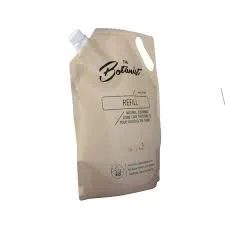Email: enid@bc-pak.com
Tel: 86-757- 88811186
- Afrikaans
- Albanian
- Amharic
- Arabic
- Armenian
- Azerbaijani
- Basque
- Belarusian
- Bengali
- Bosnian
- Bulgarian
- Catalan
- Cebuano
- chinese_simplified
- chinese_traditional
- Corsican
- Croatian
- Czech
- Danish
- Dutch
- English
- Esperanto
- Estonian
- Finnish
- French
- Frisian
- Galician
- Georgian
- German
- Greek
- Gujarati
- haitian_creole
- hausa
- hawaiian
- Hebrew
- Hindi
- Miao
- Hungarian
- Icelandic
- igbo
- Indonesian
- irish
- Italian
- Japanese
- Javanese
- Kannada
- kazakh
- Khmer
- Rwandese
- Korean
- Kurdish
- Kyrgyz
- Lao
- Latin
- Latvian
- Lithuanian
- Luxembourgish
- Macedonian
- Malgashi
- Malay
- Malayalam
- Maltese
- Maori
- Marathi
- Mongolian
- Myanmar
- Nepali
- Norwegian
- Norwegian
- Occitan
- Pashto
- Persian
- Polish
- Portuguese
- Punjabi
- Romanian
- Russian
- Samoan
- scottish-gaelic
- Serbian
- Sesotho
- Shona
- Sindhi
- Sinhala
- Slovak
- Slovenian
- Somali
- Spanish
- Sundanese
- Swahili
- Swedish
- Tagalog
- Tajik
- Tamil
- Tatar
- Telugu
- Thai
- Turkish
- Turkmen
- Ukrainian
- Urdu
- Uighur
- Uzbek
- Vietnamese
- Welsh
- Bantu
- Yiddish
- Yoruba
- Zulu
types of bags for packaging
Views :
Update time : Feb . 12, 2025 20:57
Packaging plays a crucial role in preserving product quality, enhancing brand appeal, and ensuring safe delivery. Among numerous elements in the packaging industry, bags stand out due to their versatility and functionality. This article delves deep into innovative types of bags for packaging, offering insights into their uses, benefits, and why they are gaining traction in the market.
Synonymous with reliability, polyethylene bags come in several variants, including high-density (HDPE) and low-density (LDPE), each serving distinct purposes. While HDPE bags are rigid and sturdy, suitable for grocery and retail use, LDPE bags are softer and more flexible, making them suitable for bundling products like newspapers and magazines. Their water-resistance capabilities are particularly appreciated in sectors prioritizing product integrity. Polypropylene (PP) Bags Characterized by their clarity and robustness, polypropylene bags are ideal for presenting products attractively while ensuring protection against moisture and vapors. These bags are commonly used in the textile industry and for packaging stationery and food items like snacks and candies. Due to their heat resistance, PP bags also find applications in hot-fill packaging processes. Jute Bags As one of the most sustainable packaging options, jute bags combine durability with a reduced environmental footprint. These bags are biodegradable, recyclable, and have high tensile strength, making them perfect for agricultural products like potatoes and grains. The increasing demand for sustainable practices has led to a rise in preference for jute bags, aligning with the global shift towards eco-friendly packaging solutions. Antistatic Bags Crucial for electronics and sensitive equipment, antistatic bags protect against electrostatic discharge (ESD), safeguarding components during shipping and handling. These bags are made with materials that limit static electricity build-up and are used extensively in the electronics industry, where even minor discharges can cause significant damage. Thermoformed Packaging Bags Customized to fit specific product shapes and sizes, thermoformed packaging bags offer a high level of protection and presentation. Often used for hardware, tools, and accessories, these bags ensure products are prominently displayed while keeping them secure in transit. The custom-fit nature of thermoformed bags reduces material use and increases packaging efficiency. Choosing the right type of packaging bag requires a deep understanding of product characteristics, market demands, and sustainability goals. By harmonizing these aspects with consumer preferences, businesses can optimize their packaging strategy, ensuring product safety and enhancing brand image, ultimately leading to increased customer satisfaction and loyalty. Leveraging these insights empowers businesses to make informed packaging decisions that align with contemporary market trends and sustainability imperatives.


Synonymous with reliability, polyethylene bags come in several variants, including high-density (HDPE) and low-density (LDPE), each serving distinct purposes. While HDPE bags are rigid and sturdy, suitable for grocery and retail use, LDPE bags are softer and more flexible, making them suitable for bundling products like newspapers and magazines. Their water-resistance capabilities are particularly appreciated in sectors prioritizing product integrity. Polypropylene (PP) Bags Characterized by their clarity and robustness, polypropylene bags are ideal for presenting products attractively while ensuring protection against moisture and vapors. These bags are commonly used in the textile industry and for packaging stationery and food items like snacks and candies. Due to their heat resistance, PP bags also find applications in hot-fill packaging processes. Jute Bags As one of the most sustainable packaging options, jute bags combine durability with a reduced environmental footprint. These bags are biodegradable, recyclable, and have high tensile strength, making them perfect for agricultural products like potatoes and grains. The increasing demand for sustainable practices has led to a rise in preference for jute bags, aligning with the global shift towards eco-friendly packaging solutions. Antistatic Bags Crucial for electronics and sensitive equipment, antistatic bags protect against electrostatic discharge (ESD), safeguarding components during shipping and handling. These bags are made with materials that limit static electricity build-up and are used extensively in the electronics industry, where even minor discharges can cause significant damage. Thermoformed Packaging Bags Customized to fit specific product shapes and sizes, thermoformed packaging bags offer a high level of protection and presentation. Often used for hardware, tools, and accessories, these bags ensure products are prominently displayed while keeping them secure in transit. The custom-fit nature of thermoformed bags reduces material use and increases packaging efficiency. Choosing the right type of packaging bag requires a deep understanding of product characteristics, market demands, and sustainability goals. By harmonizing these aspects with consumer preferences, businesses can optimize their packaging strategy, ensuring product safety and enhancing brand image, ultimately leading to increased customer satisfaction and loyalty. Leveraging these insights empowers businesses to make informed packaging decisions that align with contemporary market trends and sustainability imperatives.
Recommend products
Read More >>
Related News
Read More >>













